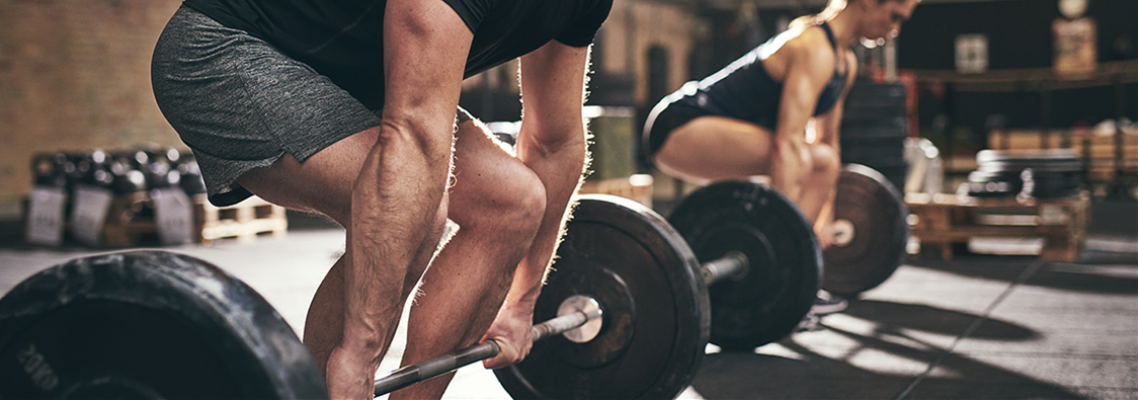Probably the most asked question we get at the Advance Performance Lab is “can I have a specific training programme to target a particular muscle or group of muscles”. Whilst there are varying reasons behind why people want these training programmes, invariably it is because they want to alter their body composition or gain muscle mass (hypertrophy), in a particular area e.g., abs, arms, chest.
My reply is always “how long have you been training consistently and how often?” This will determine the individual’s ‘training age’. Someone that hasn’t trained consistently (consistently is the key term here, an average of once or twice a week, every week) for at least 6 – 12 months will have training age of zero, and thus place them as untrained, novice or beginner. Training age is incredibly important when creating a new training programme as it provides the coach with an understanding of where the individual should start, however, this is important consideration is often overlooked by most coaches or personal trainers.
If you look at the most searched gym-based terms, I can guarantee that ‘gym programme for a beginner’ is right near the top with thousands of website options such as ‘the best gym programme ever’, ‘get shredded in 6 weeks’ or ‘The –insert celebrity or superhero name here – programme’!
Unfortunately, we live in a world where those that pay the most, make the most noise, or just post for the sake of posting something new, dominate our internet searches, which in turn, leads to many novice gym goers thinking that this amazing training programme will turn them into their idol……I’m anticipating, Train Like Trump for Golf Performance!!
Let me enlighten you for a moment, if you are a beginner in the gym, your training programme does not matter as much. I say, as much, because as untrained, any training will result in some sort of adaptation (training results).
However, what isn’t discussed nearly enough on the good old internet, are the nuances associated with programme design (what us strength coaches call acute variables) and why most beginners stop training after a few weeks, as their get massive in 3 weeks isn’t repaying the training results that want, and they can’t figure out why they have constant muscle ache!
Therefore, I have given a brief overview below of the 5 most important factors that I feel are missing from these internet-based programmes (and most commercial gym programmes if I am honest) and why our training app might be a better fit for you.
1. Practice
We understand that strength and hypertrophy are mostly associated with mechanical tension in the muscle, which you get from strength training, hence the name resistance training. With a training age of zero, and no experience of lifting, the goal is to practice the lifts so that we can increase the mechanical tension over a period of time (as your training age increases).
Therefore, the most important aspect for the individual is to practice. Practice being in a new environment (the Lab), practice the set up and execution of each lift/exercise, practice with varying loads/reps/set schemes, as this will help with feedback loops – effort, exertion, balance, and coordination. Welcome to training!
Often people fear gyms, they see them as intimidating atmospheres, therefore, simply attending the gym can be stressful for some. At the Lab we understand this, and we offer our Prepare to Lift Programme. The Prepare to Lift Programme welcomes you to training, we coach you through a range of lifts, empowering you to practice well on your own. Plus, we take the time to answer any of your questions. After graduating from the Prepare to Lift programme you will be ready to further challenge yourself and be motivated to get strong in the different lifts, which directly and indirectly will lead you to becoming more athletic!
2. Sets and reps.
Often, we are asked which set/rep scheme is the best, the simple answer is there isn’t a best set/rep scheme, as it depends on your training age, how well you adapt to the training, and how well you recover (lifestyle factors). From simply a strength perspective, you can get stronger doing low reps of 1-3 and you can get stronger doing 20/30/40 reps – time might be a consideration here!
If you compare the two schemes, low reps, and high reps, strength gains are usually higher at lower rep ranges because of the greater mechanical tension; however, this would be advised for individuals with a greater training age. That said, starting with higher rep ranges allows for more practice of the lifts, alongside increased frequency of gym visits. Sets can be as low as 1 – 2 per exercise.
3. Effort
The human body is inherently lazy, another word for lazy, from the body’s perspective is efficiency – it does its upmost to conserve energy (We will discuss weight-loss very soon). Therefore, to drive adaptions (training results) from a lift/exercise we are required to put in the requisite level of effort to drive a signal forcing the body to adapt.
We coach our members to use their energy productively, and when lifting we ask our members to lift the load as quickly as possible, as this keeps the effort high. High effort when training is key, as effort and work will lead to a level of fatigue, and, to the best of our knowledge, fatigue may be a signal that drives training adaptations. However, the potential pit falls with training closer to failure or an extreme level of fatigue (not being able to perform another repetition) is that you will experience a lot of discomfort in the musculature over the following few days, even weeks! Note – this muscle soreness may not be required for adaptation or training results, especially if it effects your training frequency.
4. Repetitions in reserve (RIR)
To further ensure that there is less discomfort from training (the level of discomfort will be dependent on numerous factors), we advise to use repetitions in reserve to ascertain what load is required. For example, you may choose to do a bench press for 2 sets of 10 reps, yet are unsure of the starting load, therefore, warm up with a load that you can comfortably perform 15 reps, yet only perform 10 reps.
This would equate to having 5 reps in reserve (you performed 10 reps with a load that you could manage 15 reps whilst still showing good lifting form), increase the load the next set to an approximate 3 reps in reserve. Again, once completed, consider how it felt, do you have more than 3 reps left in the tank? If so, on the next set go slightly higher, however, if you’ve only got 3 left, stick with this load for your next set. Our app-based programmes will advise you on the reps in reserve for each stage of your training programme.
5. Tracking and monitoring
Essential to any training programme is the ability to easily track and monitor your training history. This gives you (and your strength coach) the ability to make the necessary changes to your future training programmes. For example, if you have just finished a training block and you feel like you are not progressing, your strength coach can look at your previous training data and assess for potential reasons why.
For example, from the load lifted in your lifts (intensity) to your training volume (number of sets x reps) or the number of training sessions completed per week (frequency). Relative to your training age, your strength coach can manipulate to help with your training progress. But only if there’s previous training data or information! Coaching is a team effort!
Conversely, if you are experiencing discomfort, tiredness or lack of enthusiasm, your strength coach might reduce the training variables of your programme, whilst also providing advice on other often overlooked areas such as nutrition, sleep, and recovery.
I appreciate this might be a lot to take in, compared to simply downloading a generic programme and running with it. However, there is a reason why gyms have a huge turnover in memberships every month, with beginners leaving due to being over promised or generally a lack of support and guidance. It is evident that gyms do not look after their members nearly well enough and there is a distinct lack of education provided.
At the Lab we take a different approach by creating a nurturing, social, learning environment whilst providing our members with a service that includes the following: A monthly catch up, either in person or online. Our own app with step-by-step programming including all the forementioned information, educational videos, and blogs, as well as a wellbeing section with wellness surveys, active recovery, and mindfulness tasks. Furthermore, we have regular social get togethers so that our members can get to know us and other members, creating a unique community. All in a beautiful, quiet countryside setting.
At the Lab, we care about our members and their wellbeing, therefore, we do our upmost to support them with all their training needs. If you are a beginner, there is a solution for you at the Lab. Therefore, if would like to find out more about how we are different in our approach to supporting you with your goals, please feel free to drop us a message or simply pop in for a coffee and a chat. We are here to help.
Sign up for the Strength code app for a one-month free trial using code SC3MONTH. Cancel anytime, T’s and C’s apply.



